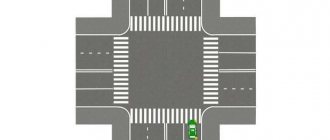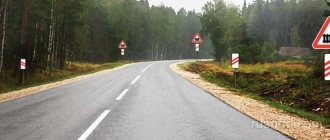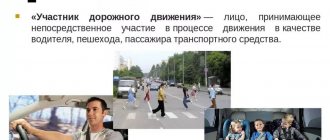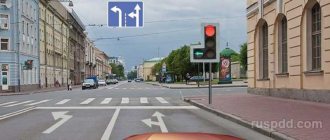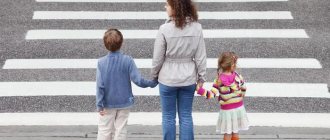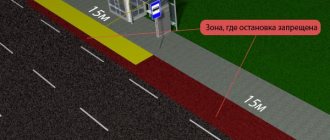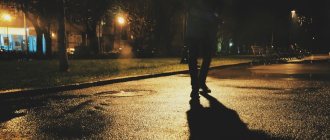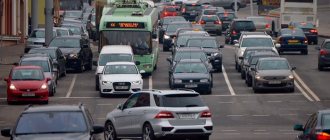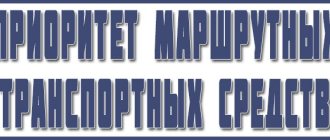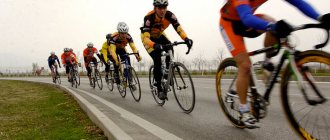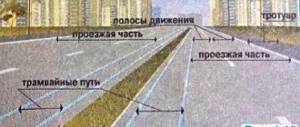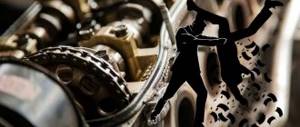Purpose
The purpose of these signs is quite varied and it is very difficult to define them unambiguously. There is even an opinion that this group includes signs that were not included in other groups.
However, there is a definition and it is formulated in the traffic rules:
Signs of special requirements are intended to introduce or cancel certain traffic modes.
They introduce or cancel restrictions, inform the driver about driving modes and can combine several instructions at once.
Special road signs
It is worth noting that the traffic rules in the road signs section contain a large number of signs. They prohibit, inform, prescribe. There are signs giving priority to travel or warning the motorist about an obstacle to normal traffic ahead.
The 2021 traffic rules contain the following types of signs:
- Warning. This is a signal that there is a dangerous section of the road ahead where attention will be needed.
- Priority. The sign establishes the rules for crossing the roadway. Placed at intersections, road crossings, and narrow sections of the road.
- Prohibiting. These are signs that restrict movement or remove this restriction.
- Prescriptive. Determining the accuracy of movement on a given section of the roadway.
- Particularly prescriptive. Indicating the beginning of a special driving mode or canceling this mode.
- Informational. In this case, signs provide information about the location of a settlement or infrastructure facility.
- Service. On these signs you can always find out about the location of service points for people and vehicles in a given place.
- Additional. These signs may limit the effect of other signs or contain additional information necessary for other road users.
The use of each sign is regulated by the traffic rules in force on the territory of the Russian Federation. Their correct distribution is handled by the traffic police.
Detailed description with explanations
Tells the driver to start driving on the highway. By default, passenger cars are allowed to travel at a speed of no more than 110 km/h. In order to ensure such a high speed, certain design solutions are used on highways:
- The presence of a dividing strip, which practically eliminates head-on collisions of oncoming vehicles.
- There are no intersections at the same level with roads, railways and tram tracks, as well as the absence of surface pedestrian crossings.
A number of restrictions are also introduced:
By the way, a highway is a sign with a green background, and if you see a green background on other road signs, for example, on information ones (such as the name of an object, an indicator of distances and directions), then the road to these objects will pass along the highway.
Sign 5.2 informs the driver about the end of the highway, which means a reduction in the speed limit and the abolition of the restrictions described above.
Designed only for the movement of cars, buses and motorcycles.
The presence of a dividing strip is not regulated here, so the maximum speed is limited to 90 km/h. But all other prohibitions and restrictions are exactly the same as when driving on highways.
5.4 warns of the end of the road for cars.
The movement of all vehicles along the entire width of the roadway is carried out in one direction. I would like to draw your attention to the fact that stopping and parking on such roads for passenger cars and trucks with a maximum permitted weight of up to 3.5 tons is permitted on both the left and right sides of the road. Reversing is also not prohibited. 5.6 speaks of the end of the road, where one-way traffic is organized.
Installed before exiting or crossing a one-way road. The direction of the arrow on the sign corresponds to the direction of traffic flow. In fact, the signs prohibit turning in the direction opposite to the arrow. But under no circumstances is it prohibited to turn around.
The beginning and end of a road with reverse traffic. Tells the driver that the direction of movement in one or more lanes, depending on the situation (time of day, day of the week, etc.) may change to the opposite.
Reversible lanes are indicated by a double broken line marking. And it is prohibited to drive onto them without seeing a reverse traffic light signal.
Drive out onto a road where reverse traffic is organized. The principle is the same as what I described earlier: without seeing a reversible traffic light signal, you cannot turn into reversible lanes (marked by markings).
The beginning and end of the road, with a dedicated lane for route vehicles moving towards the general traffic flow. Entering this lane is strictly prohibited and is equivalent to entering oncoming traffic.
The beginning and end of the road, with a dedicated lane for cyclists and moped riders who are moving towards the general traffic flow.
It is installed before entering the road, where there is a lane for route vehicles moving towards the main traffic flow. Turning into this lane, as well as driving along it, is prohibited. Turning around at such intersections is not prohibited!
Informs the driver about an intersection with a road where there is a dedicated lane for bicycles and mopeds. Like the previous sign, it is prohibited to turn into this lane.
Tells the driver about the beginning/end of the lane for route vehicles. Moreover, in this case, the lane is favorable. If the sign is supplemented with a “traffic lane” sign, then the lane to which the arrow points is allocated for route vehicles. If there is no such sign, then no matter where the sign is installed (on the left or right of the road, above the road), the lane for route vehicles is the far right.
Now is the time to decide whether you can occupy it?
There are two scenarios here:
- this lane is separated from the rest of the roadway by a continuous marking line. In this case, under no circumstances can you drive onto it;
- the strip is separated by a broken marking line. Traffic on it is prohibited. But before turning left, we must first change lanes to it (using it as a braking area), and when entering a road with a lane for route vehicles, first take this lane, using it as an acceleration lane. Beginning/end of the lane for bicycles and mopeds. Other t.s. they cannot use it.
The situation is similar with the lane for cyclists and moped drivers; other vehicles cannot occupy it.
Indicates the number of lanes and the permitted directions of movement along them. Can be installed both above the roadway and to the left/right of it. Only route vehicles can deviate from the requirements.
Indicates possible driving directions for each lane. Unlike previous signs, signs in this series are installed above each lane. They are placed in advance so that the driver can take the position necessary for a particular maneuver in advance.
Informs the driver about the presence of an additional passing lane for traffic, and indicates which side it will appear on. On the sign you can find additional instructions, for example: restrictions for certain categories of vehicles. or minimum speed limit.
Notifies the driver about the end of the lane and the need to change lanes soon.
Shows the driver the number of lanes on the roadway and the restrictions that apply to each of them.
Not only a bus stop, but also a trolleybus stop. Stopping and parking closer than 15 meters is prohibited. If there is a marking, then we take the distance from the yellow zigzag line, if there is no marking, then from this sign. An exception is stopping to pick up/drop off passengers, but the driver must not interfere with buses and trolleybuses. And also give way to route vehicles leaving the stopping place.
Tram stop location. Very often the tram stops in the middle of the roadway and the paths of pedestrians walking towards the tram and cars intersect. In this case, pedestrians, or passengers, who are on the side of the tram doors, have priority over cars, that is, the driver must let them through.
This is how taxi parking areas are designated.
Regardless of whether there is a zebra marking or not, this sign indicates a pedestrian crossing. The boundaries of a pedestrian crossing are considered to be the distance between two such signs installed on different sides of the road.
Indicates the front (closest to the driver) boundary of the artificial hump. When this sign is detected, the driver is advised to reduce speed in advance.
The beginning and end of the residential area. Here pedestrians have priority over cars over the entire width of the roadway. Certain restrictions are introduced in the area of the sign:
- through traffic ban
- training ride
- parking with engine running
- permitted speed no more than 20 km/h
- parking of trucks (with a permissible weight of more than 3.5 tons) outside specially designated areas
A sign on a white background means that the driver is entering a populated area. And accordingly, all rules for movement within the boundaries of a populated area come into force:
- speed limit 60 km/h
- restriction on sound signal (except for accident prevention), etc.
This sign informs the driver about the presence of a populated area, but since it is located somewhat to the side and the driver does not pass through it, the rules for driving in a populated area do not apply here.
